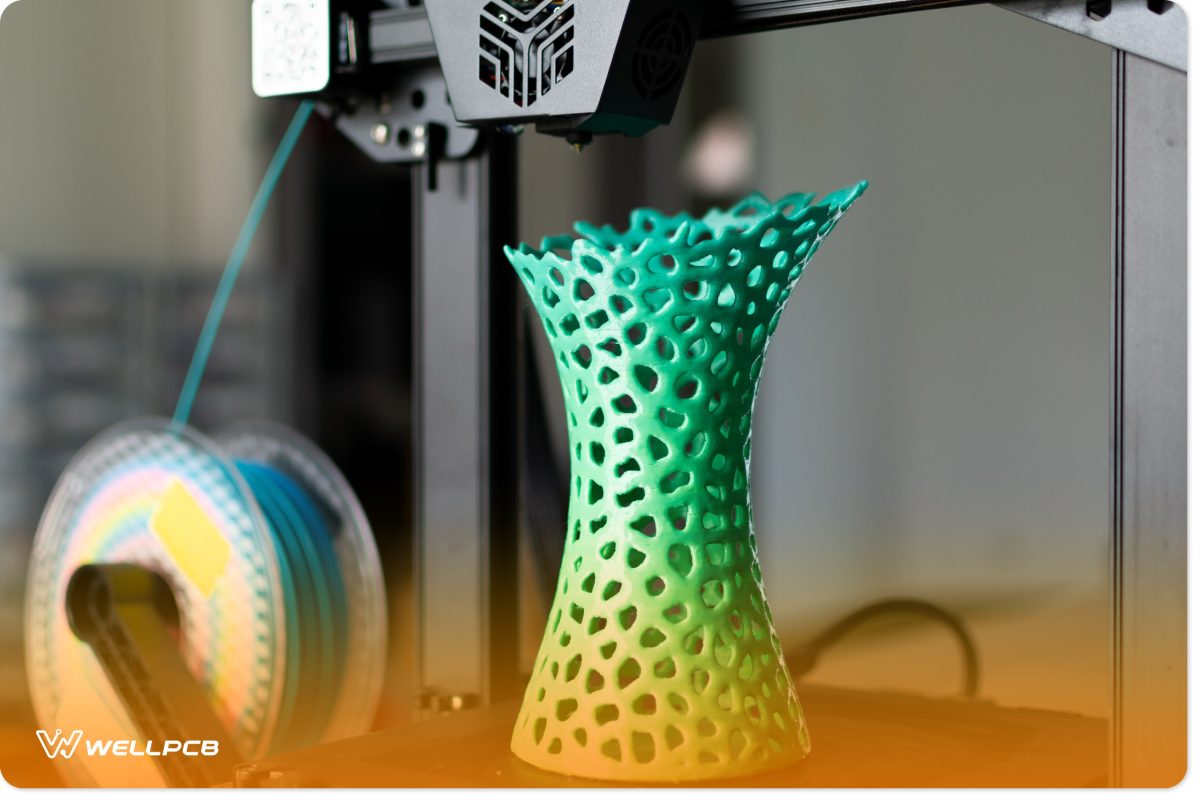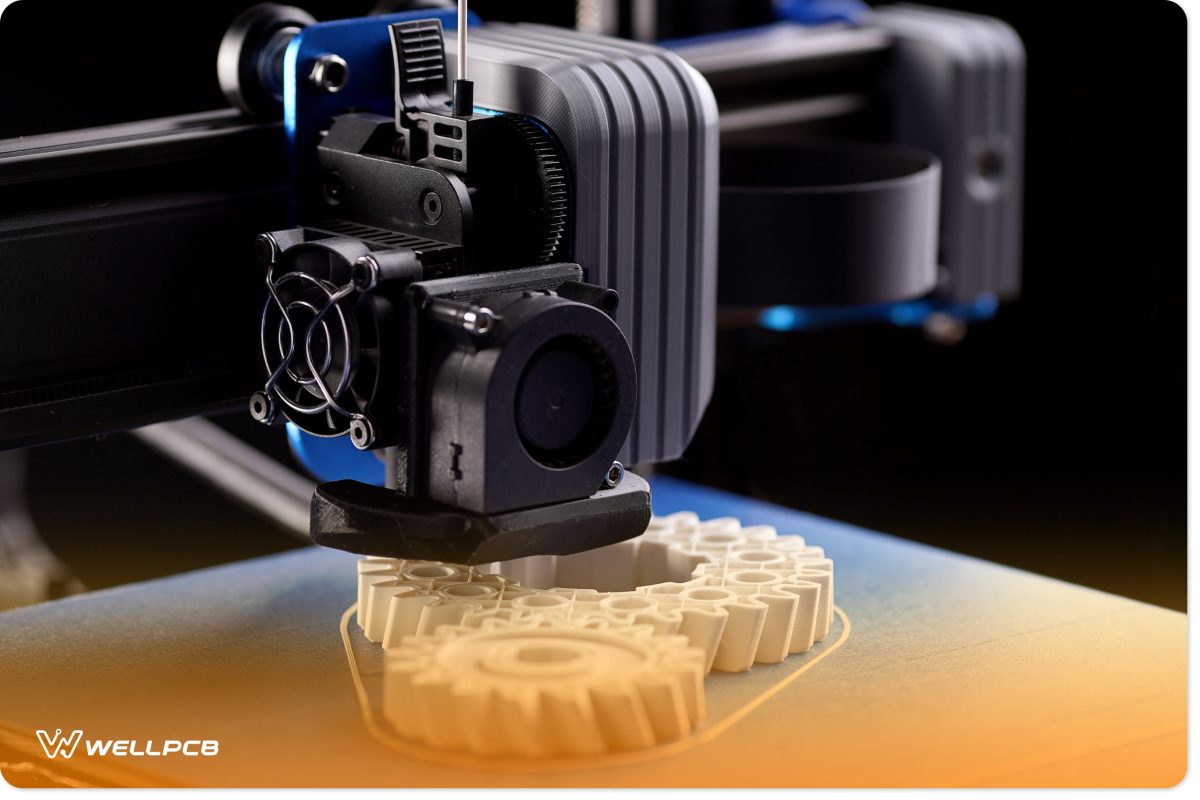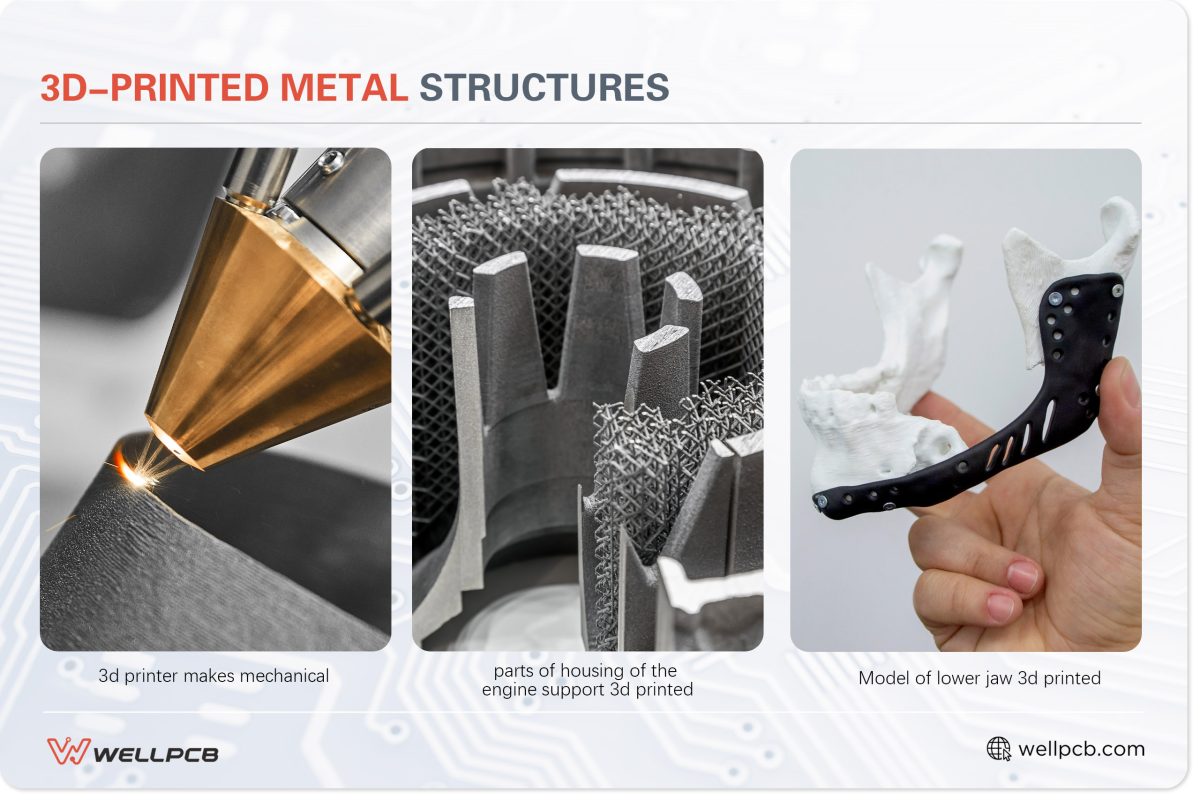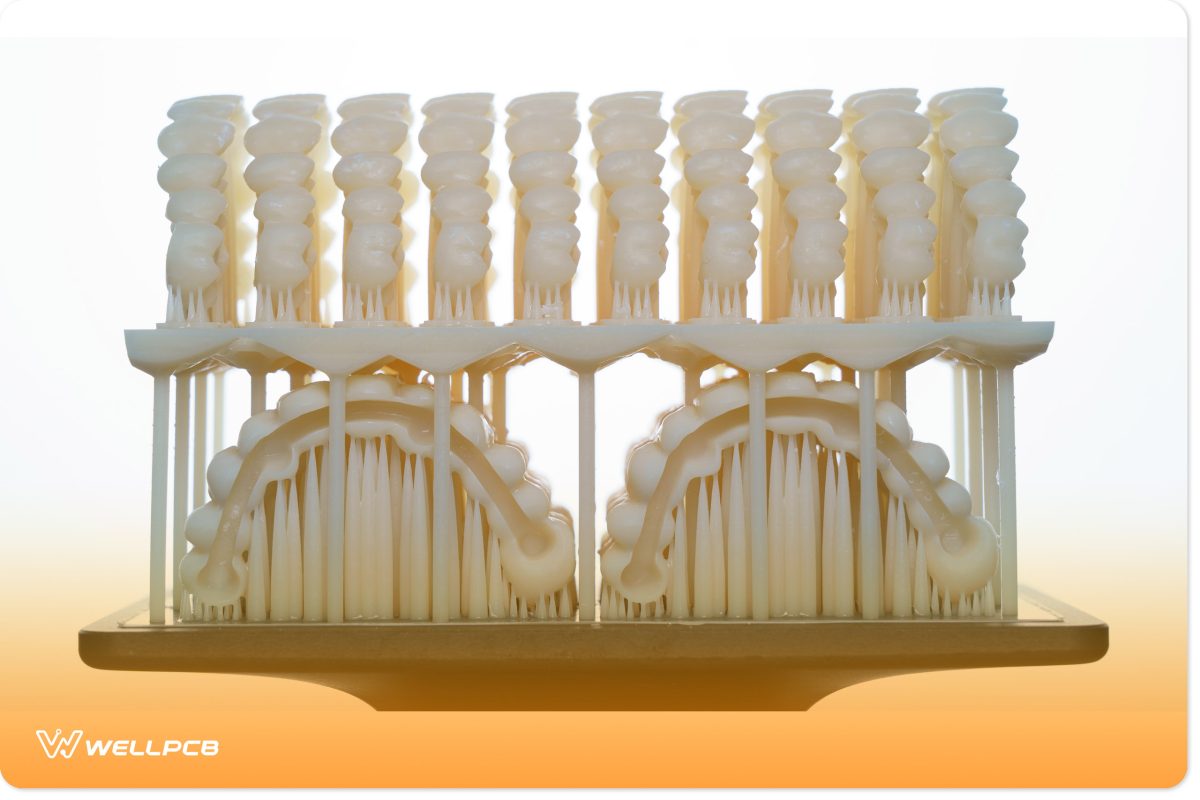Contents
- 1 The Basics of 3D Printing Materials
- 2 How Are Thermoplastics Used in 3D Printing?
- 3 What Are the Benefits of Resins in 3D Printing?
- 4 Why Are Metals Important for Industrial 3D Printing?
- 5 What Are Composites and How Are They Used in 3D Printing?
- 6 Emerging Materials in 3D Printing
- 7 How to Choose the Right 3D Printing Material for Your Business
- 8 Conclusion
The Basics of 3D Printing Materials
3D printing materials generally fall into four main categories: thermoplastics, resins, metals, and composites.
- Metals are the most expensive option, due both to the cost of materials and the process. Metal 3D printing requires high temperatures and extended print times, but the final product is extremely durable.
- Plastics are the easiest and most affordable to work with, though the resulting prints tend to be less smooth and less strong compared to other materials.
- Resins offer more detailed and smoother prints, making them ideal for applications where precision and surface finish are important.
- Composites are plastics enhanced with additional materials, such as carbon-fiber, to improve properties like stiffness, dimensional stability, and strength. These enhanced plastics are suitable for more demanding applications than standard plastics alone.
How Are Thermoplastics Used in 3D Printing?
Thermoplastics are preferred over thermosetting plastics in 3D printing because they can be repeatedly melted and reshaped without decomposing.
Common thermoplastics used in 3D printing include PLA, ABS, PETG, and nylon, which are typically processed through Fused Deposition Modeling (FDM).
This process involves heating and extruding plastic filaments through a nozzle to form layers of the final object.
Polylactic Acid (PLA)
PLA is the most popular 3D printing plastic material because it’s cheap, easy to use, and eco-friendly.
The material is fully biodegradable, as it’s sourced from bioproducts like cornstarch and sugarcane.
PLA doesn’t require a heated bed and is odorless, making it user-friendly and environmentally safe.
However, as it’s less resistant to chemicals, UV, and heat, PLA is best suited for prototypes, decorative items, and cosplay props.
Though PLA comes in both hard and soft varieties, the harder type is strong but brittle.

Acrylonitrile Butadiene Styrene (ABS)
ABS is one of the earliest materials used in 3D printing and remains popular due to its low cost and high durability. With impressive impact resistance, longevity, and availability in multiple colors, it is ideal for products like LEGO bricks.
With its higher glass transition temperature and heat resistance, ABS is also suitable for high-temperature and outdoor applications.
However, this material requires a heated bed or chamber to ensure perfect adhesion and dimensional stability.
Otherwise, it may contract or warp as it cools. ABS also emits strong fumes during the printing process, so good ventilation is essential.
Acrylonitrile Styrene Acrylate (ASA)
ASA is a UV-resistant alternative to ABS, making it perfect for outdoor use. While it shares many of the same properties, such as strength and impact resistance, it is the more expensive option.
Common applications include sunglasses, birdhouses, and sundials. Like ABS, ASA is prone to warping and emits fumes during printing.
Polyethylene Terephthalate Glycol (PETG)
PETG, a modified form of PET, is valued for its semi-rigidity, impact resistance, and chemical resistance. It is transparent and food-safe, often used for items like water bottles.
PETG requires lower printing temperatures, reducing warping and enhancing dimensional accuracy. However, it struggles with bridging and may leave surface “hairs” due to stringing.
Nylon
Nylon is a strong, semi-flexible thermoplastic known for its toughness and abrasion resistance.
It is ideal for 3D printing flexible, fatigue-resistant components like functional product prototypes and cable ties.
A significant drawback of nylon is that it requires high extrusion temperatures of up to 250ºC, which many consumer-grade FDM printers can’t reach.
The material is prone to warping and emits a strong odor during printing. Nylon is also hygroscopic, meaning it absorbs moisture, so it must be stored in airtight conditions.
More About FDM and Thermoplastics
Also known as Fused Filament Fabrication (FFF), FDM is a cost-effective method ideal for creating low-cost prototypes and basic components.
Consumer-level FDM printers generally have lower resolution, making them less suited for highly intricate designs.
But since it’s cheap, hobbyists often use FDM with thermoplastics for personal projects, refining prints later through mechanical or chemical polishing.

Industrial-grade FDM printers use soluble supports to produce more refined designs and can use other thermosetting polymers, like resins and composites, for advanced applications.
However, FDM-printed products may have voids between layers if adhesion isn’t strong, making them unsuitable for load-bearing applications. Therefore, thermoplastics are ideal for quick, low-cost prototypes and proof-of-concept models in industrial applications.
For more complex designs, Selective Laser Sintering (SLS) can be used to fuse thermoplastic powders into precise structures. Though SLS yields higher precision, it’s more costly and is typically used for composite 3D printing.
What Are the Benefits of Resins in 3D Printing?
When 3D printing resins using the Stereolithography (SLA) process, lasers cure liquid thermosetting resins into hardened plastic via photopolymerization.
This method produces isotropic 3D printed parts with the highest resolution, detail, and surface smoothness of any thermosetting polymer.
This makes it ideal for creating precise prototypes, functional molds, and end-use products.
The SLA process can 3D print the following resins:
- Standard Resin: Creates smooth, high-resolution matte surfaces, perfect for lookalike prototypes and concept models.
- Draft Resin: Offers rapid printing—four times faster than standard resin and ten times quicker than FDM plastic—ideal for early prototypes and rapid iterations.
- Clear Resin: Polishes to near-optical transparency, making it excellent for applications like microfluidics.
- Tough/Durable Resin: Resistant to bending, compression, and impact, this resin is ideal for connectors, jigs, fixtures, enclosures, and housings.
- Rigid Resin: Provides dimensional stability under load, heat, and chemical resistance, making it suitable for jigs, casings, fluid parts, and fan blades.
- PU Resin: Offers UV, temperature, chemical, flame, and abrasion resistance. Ideal for high-performance parts in aerospace, automotive, and machinery.
- High-Temperature Resin: Perfect for molds, heat-resistant mounts, and fluid structures, this resin withstands high temperatures while maintaining precision.
- Flexible/Elastic Resin: Capable of enduring repeated flexing without breaking, suitable for special effects models, medical devices, flexible robotics, and consumer prototypes.
- Flame Retardant Resin: Flame, heat, and creep resistance make it suitable for high-temperature industrial settings, interior parts in vehicles, and medical electronics.
- ESD-Safe Resin: Essential for electronics manufacturing, this resin is used for anti-static prototypes, manufacturing fixtures, and component trays.
- Medical/Dental Resins: Biocompatible for medical and dental applications, including dentures, surgical guides, and prosthetics.
- Silicone 40A Resin: Best for functional prototypes, custom medical devices, and small silicone part batches.
- Alumina 4N Resin: Known for its dielectric, thermal stability, and strength, this resin is ideal for heat and electrical insulators, wear-resistant components, and heavy-duty tools.
Each resin type offers unique benefits, making SLA 3D printing a versatile option for a wide range of industrial, medical, and commercial applications.
Why Are Metals Important for Industrial 3D Printing?
While metals are the second most popular material for 3D printing, they are the leading industrial 3D printing material due to their strength, durability, and versatility.
Two primary processes are used to 3D print metals:
Fused Deposition Modeling (FDM)
Similar to plastic FDM, this process extrudes metal rods held together by polymer binders.
After printing, the product is sintered in a furnace, where the binders melt away, leaving a solid metal structure.
Direct Metal Laser Sintering (DMLS) or Selective Laser Melting (SLM)
These processes fuse metal powder particles layer by layer using a laser, resulting in high-precision, strong, and complex designs. DMLS or SLM 3D printing is ideal for making complex and lightweight aerospace components, custom implants for healthcare, and high-strength automotive parts.
Elon Musk has cited SpaceX’s use of advanced 3D metal printing to simplify the design of the Raptor 3 engine. By integrating secondary flow paths and regenerative cooling, they eliminated the need for fire suppression systems and heat shields, reducing both weight and complexity.
Metals Printable Using DMLS
- Stainless Steel: Known for its heat and corrosion resistance, this metal offers high strength, ductility, and durability.
- Titanium: Known for its strength, lightweight nature, and resistance to heat and corrosion, titanium is ideal for demanding applications in fields like aerospace. Its biocompatibility also makes it perfect for medical implants and devices.
- Aluminum: Strong, lightweight, and durable, and with excellent thermal properties, aluminum is typically used for thin metal objects like cooling fins.
- Nickel Alloys: These alloys provide extreme temperature and corrosion resistance, along with high creep, rupture, and tensile strength. This makes them ideal for harsh environments.
- Bronze: This ductile metal offers corrosion and metal-fatigue resistance, making it perfect for automotive bushings, bearings, and springs.
- Tool Steel: Hard and scratch-resistant, tool steel is ideal for high-strength parts like cutting tools and molds.
- Cobalt-Chrome: This biocompatible metal is heat-resistant, corrosion-resistant, and provides exceptional hardness and strength.
- Copper: With excellent thermal and electrical conductivity, copper is ideal for printing heat sinks and motor components with complex geometries.

What Are Composites and How Are They Used in 3D Printing?
Composites are thermoplastics blended with additional materials to enhance their properties to suit various applications.
For instance, carbon-fiber-reinforced plastic enhances the strength-to-weight ratio of the final product, as well as its thermal resistance.
These enhanced properties make this composite material a suitable alternative to metal 3D printing in applications such as functional prototypes, complex aerospace components, fixtures, jigs, and tools.
Composite 3D printing can be done using FDM or SLS methods. SLS is more popular for producing durable, functional parts with complex geometries, such as undercuts, thin walls, and intricate features.
Other composites that can be 3D printed using SLS include:
- Carbomorph: An electrically conductive plastic used for 3D printing low-cost electronic devices like circuit boards and game controllers.
- Kevlar and Fiberglass: Both composite materials provide similar properties to carbon fiber, although carbon fiber yields the highest material strength of the three. Therefore, it is more commonly used for aerospace components that were previously 3D printed using titanium or aluminum. While kevlar and fiberglass are viable alternatives, carbon fiber is usually the best option, with kevlar coming in second.
- Thermoplastic Elastomers (TPE): TPEs are elastic composites that absorb vibrations and resist deformation. The most common TPE is Thermoplastic Polyurethane (TPU), a UV-stable, rubbery material ideal for printing functional prototypes, medical devices, wheels for toys, phone cases, and bike handles.
- Polypropylene Composites: When combined with other materials, polypropylene is suitable for automotive, medical, functional-prototype, and end-use devices.
- Nylon Composites: Reinforced with glass, carbon fiber, or aluminum, nylon composites create dense, strong materials for end-use parts or functional prototypes.
Emerging Materials in 3D Printing
As the medical, aerospace, automotive, and electronics industries increasingly adopt 3D printing, new 3D printing materials are being developed to meet the demands of increasingly sophisticated components. These emerging materials include:
- Nitinol: Known for its impressive elasticity, this nickel-titanium alloy is most commonly used in medical implants. That said, 3D printing nitinol can be challenging due to nickel vaporization at high temperatures, which can alter the nickel-titanium ratio and affect shape memory. Controlling the atmosphere inside the printing chamber helps mitigate these issues, making it possible to print minimally invasive medical components like catheters, guidewires, and stents.
- Bio-Based Plastics: As the world focuses on sustainability, bio-based plastics offer a biodegradable alternative to traditional fossil-based plastics. These materials are strong, lightweight, and suitable for healthcare and automotive applications.
- Conductive Thermoplastics/Polymers: These materials, including composites like carbon-infused TPU, are used to print biomedical sensors, EMI shields, and smart textiles. Their ability to conduct electricity makes them valuable in creating advanced electronic components.
- Graphene: While 3D printing graphene is challenging due to dispersion and the cost of scalability, it is lightweight, sturdy, and electrically conductive. As such, it is ideal for making flexible electronics like solar panels and touchscreens.
- Bioink/Live Cells: Bioink, a mixture of living cells and biomaterials, is a unique and promising material that could be used in the creation of living tissues or new drugs. While still in the research phase, bioink represents a major breakthrough in bioprinting.
These emerging materials push the boundaries of what 3D printing can achieve, enabling the creation of more advanced, sustainable, and functional components for a wide range of industries.
How to Choose the Right 3D Printing Material for Your Business
When selecting the most suitable 3D printing material for your project, it’s essential to consider three main factors: aesthetics, technical performance, and processing.
These factors will ensure that the material you choose meets both the functional and visual requirements of your project.
Aesthetics
If your products require a strong visual appeal, consider materials that deliver aesthetic qualities such as color variety and surface finish.
For instance, ABS and ASA are ideal thermoplastic options for toys because they are available in various colors.
If you want a visually appealing 3D-printed metal product, on the other hand, then bronze is the go-to option.
Resins also offer smooth surface finishes, making them ideal for high-detail applications like medical and dental products, as well as jewelry.

Technical Performance
For industrial and functional parts, technical performance is a top priority. In these scenarios, consider the following performance attributes:
- Toughness/Durability: If your product needs to endure extreme conditions or repeated use, choose durable materials like carbon-fiber-reinforced plastics or metals like titanium. For prototypes and POCs, plastics and resins are usually sufficient.
- Shrinkage: Shrinkage is a big issue in 3D printing because it affects dimensional accuracy, leading the printed product to be smaller than the intended design. Select materials that minimize shrinkage during the cooling process and to ensure dimensional stability.
- Thermal Resistance: When your design involves high temperatures, choose heat-resistant materials like high-temperature resins. These are crucial for designing housings, mounts, or other parts exposed to heat.
- Tensile Strength: For parts requiring high tensile and impact strength, such as jet or rocket engine components, consider using nickel superalloys like Inconel.
- Chemical Resistance: Objects that often come into contact with chemicals, including sea/salt water, must be printed using corrosion-resistant materials to ensure longevity.
- Flexibility: For items like RC tires or components requiring flexibility, use elastomeric materials such as TPE or flexible resins.
- Electrical Resistance/Conductivity: Some applications require electrical resistance, while others need conductive materials. Your chosen material should meet your specific requirements.
- Surface Quality: High-quality surface finishes are critical for items like architectural models, where resins provide smooth, detailed finishes.
Material Processing
Material processing and its related cost are also crucial factors to consider when selecting 3D printing materials for your project.
- Cost: 3D printing materials vary considerably in cost. Plastics like PLA are among the most affordable 3D printing materials, making them suitable for prototyping and beginners. On the other hand, metals are more expensive but essential for high-performance parts. Start with cheaper materials for prototypes and molds, then move to metal 3D printing as your business grows.
- Printer Compatibility: The material you choose must be compatible with your existing 3D printer. For instance, if you have a resin printer (SLA), then you can only use resin materials. Each printer type requires specific accessories, including build plates, nozzles, and ventilation systems, which may vary depending on the material you work with.
As a business, your chosen materials will depend on your current needs and future growth potential.
You may start with simpler materials for prototypes and gradually advance to higher-performance options like metals or composites as your expertise and business expand.
Experiment with new materials to stay innovative and competitive, such as using carbomorph or conductive thermoplastics to add electronic functionality to everyday items like toy blocks or sunglasses.
By carefully considering aesthetics, technical requirements, and processing, you’ll ensure that your 3D printing materials align with your business goals and production needs.
Conclusion
Choosing the right 3D printing material is crucial for your 3D printing business as it directly affects the performance, quality, reliability, and cost-effectiveness of your products.
These, in turn, will determine the success of your business in the increasingly competitive 3D printing landscape
At WellPCB, we understand that selecting the most suitable material can be challenging. That’s why we offer expert consultation services to guide you through the process.
If you need further assistance after reading this article, we’re happy to help. Simply contact us and we’ll offer support.
We’ll be sharing insights into the various 3D printing techniques and machines soon, so stay tuned. In the meantime, check out these 3D printing projects for ideas and inspiration.





